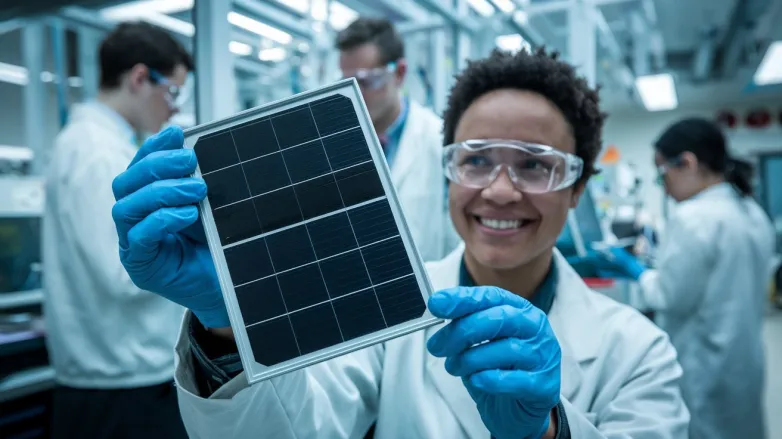NREL and CubicPV Set 24% Record Benchmark for Perovskite Minimodule
- US partnership achieves 24 % certified efficiency in multi-cell perovskite minimodule, advancing tandem solar technology toward scalable, durable commercial production.

A new chapter in American solar R & D opened this week as the National Renewable Energy Laboratory (NREL) and Massachusetts-based CubicPV unveiled a perovskite minimodule that converts 24 % of incoming sunlight into electricity—a certified world record for its class and the first such milestone achieved by a US team.
The device is not a single cell but a compact panel made up of several interconnected perovskite cells. By spreading the current across multiple junctions, the partners sidestepped resistive losses that typically drag down efficiency in larger formats. The achievement was verified by NREL’s independent cell-testing lab under standard illumination.
For CubicPV, the result validates its core strategy: stacking an ultra-thin perovskite absorber on top of conventional silicon to capture a broader slice of the solar spectrum. “Perovskites deliver high voltage, silicon delivers staying power. Together they squeeze more photons into usable energy and lower the cost per watt,” explained Adam Lorenz, the company’s chief technology officer.
NREL’s scientists brought deep expertise in materials processing, module interconnection and accelerated-aging analysis—skills honed over decades of working on thin-film technologies. Kai Zhu, senior scientist at the lab’s Chemistry and Nanoscience Center, credited the “cross-pollination of ideas” for pushing performance past previous limits. “Either group could have reached 22 or 23 percent on its own,” he said. “Cross-institution collaboration turned marginal gains into a leap.”
The two teams took turns during fabrication: CubicPV deposited the perovskite layers on glass substrates at its pilot line near Boston; NREL handled laser-scribing, encapsulation and final electrical testing in Colorado. Sharing the workload accelerated iteration cycles and allowed each side to troubleshoot distinct process steps in parallel.
Attention now shifts to real-world durability. Although lab tests suggest perovskite-silicon tandems could match the 25- to 30-year lifetimes of today’s best panels, UV exposure and moisture ingress remain stubborn challenges. Lorenz says the partnership’s next goal is a module “large enough to power a rooftop string yet rugged enough to survive a year outdoors without performance fade.”
If that target is met, industry analysts believe tandem perovskites could start feeding US assembly lines before the decade ends, delivering higher-efficiency panels without major retooling of existing silicon factories—and keeping the nation in the race for solar supremacy.
Also read


